Hidden places
This series covers places where not many tourists show up. Discover the gems, that lie off the beaten tourist track!
Only attractions where, during my entire visit, I haven’t come across more than five other international tourists make it into this category. I don’t count local tourists.
The Million Bottle Temple (Wat Lan Khuat) near Sisaket
This temple – officially named Wat Pa Maha Chedi Gaeuw – that I so desperately wanted to see, ever since I had heard of its existence, was the reason I decided to rent a car. The temple is located about 50 kilometres south of Sisaket in the small settlement of Khun Han. Once I arrived there, I had to stop and ask for directions.
Knowing the right words in Thai would be helpful in such situations, but one can get by without it quite easily. The locals are very helpful, often calling in the help of someone who speaks decent English and who is always happy to help a lost stranger. Sometimes that means waiting around for a while, and the promised translator cannot always be relied upon to actually show up. In that event, good old sign language should do the trick.
The temple itself does not require much explanation on my part. The pictures really speak for themselves. All temple buildings are partially or completely constructed out of glass bottles. Still, the temple is a place of worship and quietude, and calls for the same seriousness and composure as all other temples in Thailand.
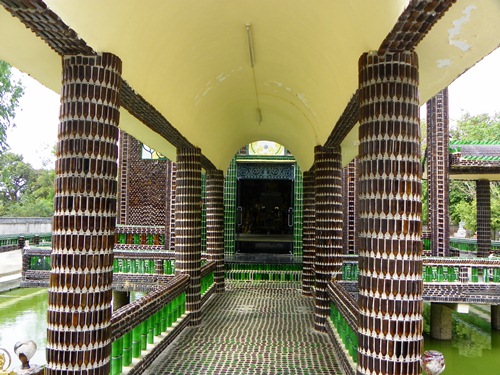
The floor is made from bottle bottoms. 🙂
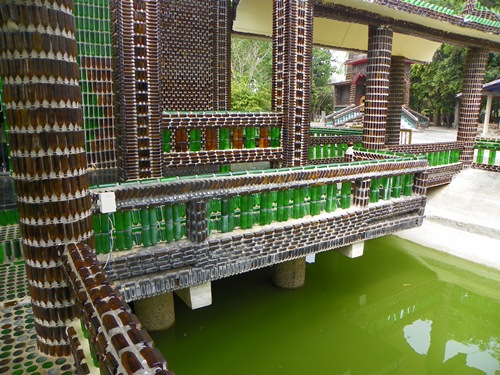
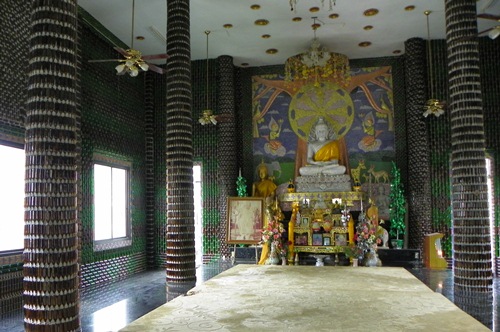
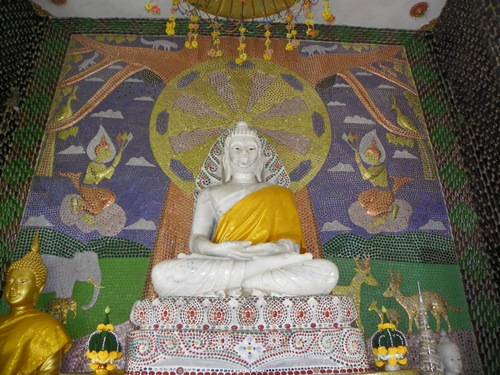
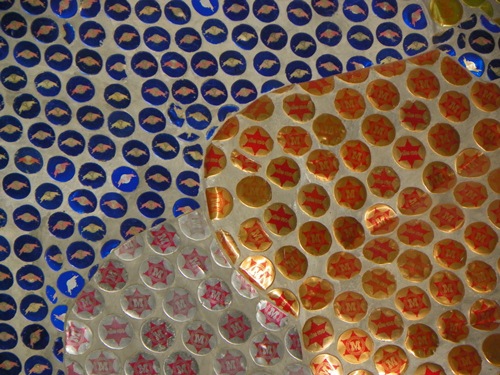
Bottle caps were utilized for the picture at the altar.
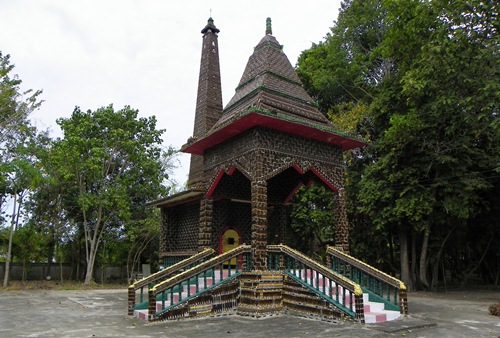
The temple’s crematorium.
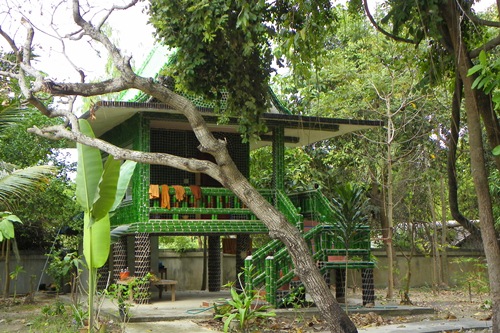
One of the monks’ huts.
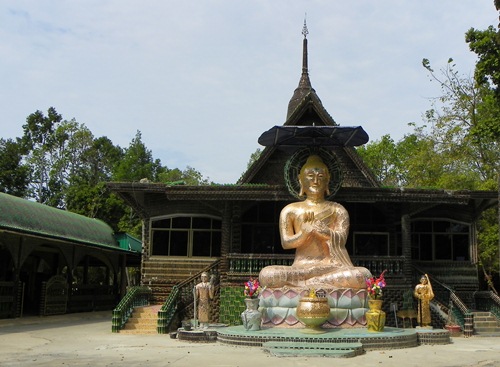
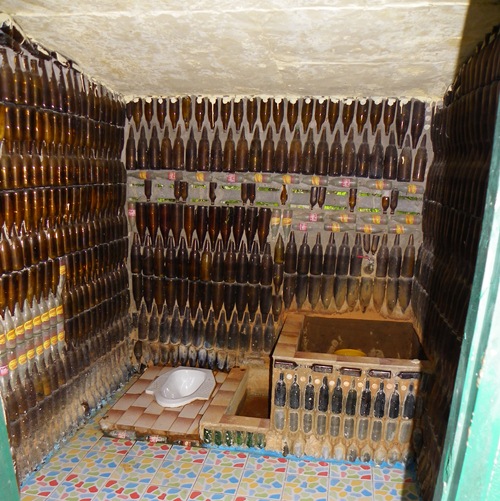
Even the toilet cubicles are made from bottles.
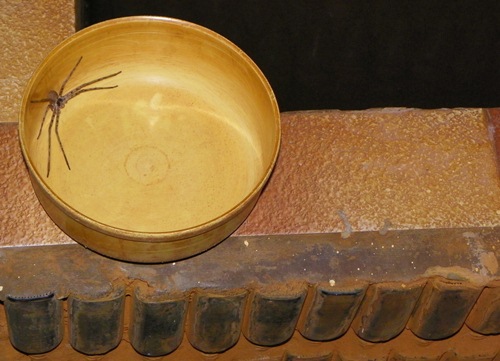
For once, I forgo flushing the toilet.
How to get there
Sisaket does not offer a great choice of transport options to tourists. It is impossible to rent a motorcycle; or perhaps I just did not come across the right places. A tuk-tuk driver may charge up to 3000 Baht to drive you around for a half a day; perhaps 2000, if you are good at negotiating. I eventually settled on renting a car in Ubon Ratchathani to discover the area around Sisaket on wheels. If you have an international driving license, this should not be a problem.
The international license also has additional advantages when you get checked by the local police: The officer who stopped me obviously did not want to spend his time deciphering this “strange document”, so he just sent me back on my way, despite the fact that I was probably driving a little faster than the speed limit at the time.
Driving in this part of Thailand is quite the mellow activity. It is advisable, however, to drive conservatively, always keep an eye out for anything unexpected, and to refrain from enforcing your right of way – otherwise you may be involved in a car accident before you know it. Slow and steady will get you to your destination almost as fast, and you do not risk totalling your rental car.
I rented my car, a mid-range Toyota, from Jay-Jay Car & Motorcycle Hire on the corner of Supphasit and Nakronban Street in Ubon Ratchathani, 0896 255 823. For the whole day I paid 1300 Baht, plus 3000 Baht deposit. Topping up the tank with gasohol 91 (slightly cheaper than petrol 91, and works fine) set me back another 1030 Baht. All in all, the car cost me less than hiring a tuk-tuk for a day, and it is definitely a more comfortable way of getting about, so not a bad choice at all.
The newsletter of Dont worry Just travel: Once a month everything that is new in an overview plus additional tips free of charge and non-binding.
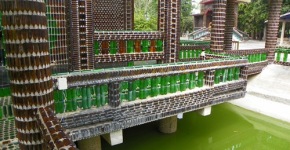
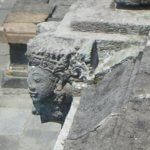
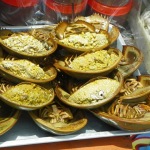
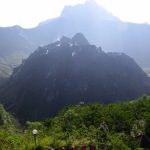
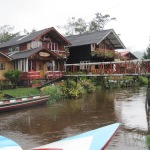
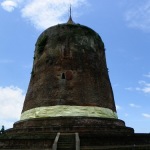
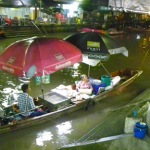
Comments
7 responses to “Million Bottle Temple in Thailand”
We found this to be a very cool temple, sitting in the middle of nowhere and fairly close to a small village. No pictures do this construction justice. Worth getting off the beaten track to visit.
Dear Elizaveta, thanks for your compliments! Yes, if you can spare the time and detour, you should really visit it one day. It’s worth it!
Great photographs. Hard to imagine that the monks even made the floor out of bottle bottoms. Awesome structure. I hope I have the chance to visit one day.
Dear Pablo,Yes! Put it on your travel shortlist. :-)[quote name=”Pablo”]That has to be one of the coolest things. I was just talking to a friend about people who build houses out of stacked tires filled with sand. Thick walls but they make a pretty stable structure.Maybe one day I’ll be able to come across this glass bottle temple![/quote]
Dear Sofia,Yes it is a special place, worth the effort to find it and to go there.[quote name=”Sofia – As We Travel”]Wow that is such a cool idea, looks amazing![/quote]
That has to be one of the coolest things. I was just talking to a friend about people who build houses out of stacked tires filled with sand. Thick walls but they make a pretty stable structure.Maybe one day I’ll be able to come across this glass bottle temple!
Wow that is such a cool idea, looks amazing!